
September 2021
Under the Twin Stacks
By Paul Harvey
Dreams sometimes develop into plans which, with a little effort, can become reality. This little tale is just such a case.
Back in the early spring, I was contacted by Brad Esposito, the General Manager of the newly re-organized East Broad Top Railroad. He visited Coolspring Power Museum during our June show, so now it was time for CPM to visit EBT! Exciting! So my friend, Ken Uplinger and I chose the weekend of July 24 and 25. Now to make it happen! Simple, huh? Yep, and this is the story of a great adventure!
First thing, how are we getting there and how do I get around when I do arrive? Hmmm? So I just used my “Subby,” borrowed a trailer from Bo, and loaded up a golf cart. Worked so well! We left here about nine and had a scenic drive to Altoona, then on to Orbisonia, Pennsylvania, home of the East Broad Top Railroad. We had a great lunch on the way and arrived about one in the afternoon.

Orbisonia is a pleasant village of about 400 souls. Easy to fall in love with it! There are a couple of churches, a restaurant, and enough stores to provide most everything needed. BUT - Here are two gems for all to enjoy: the East Broad Top Railroad, and the Rockhill Trolley Museum. Super weekend ahead!
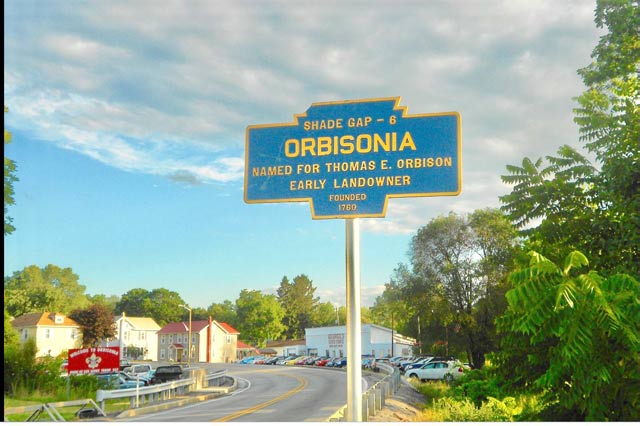
Anxious to get on with the adventure, Ken and I took a moment to secure our room in the Iron Rail Bed & Breakfast, just across the street from the EBT Roundhouse. Nice!

But before rushing to enjoy it all, let’s relax and time travel back to
the beginning of the twentieth century. Wake up and look all
around! We are still standing by the house above, but it all looks so
different. Scary! The hills are denuded of trees for many
miles
around, supplying charcoal for the hungry iron furnace.
The railroad is growing, taking the excellent quality coal north to Mt.
Union where it was shipped to markets in Boston, New York, and
Philadelphia. It is a bustling industrial complex providing high
quality iron and coal. Smoke and fumes from the iron furnace and
railroad fill the air! Cough! Enough of that, so let’s
return to the present to tour and appreciate the heritage here.
During its heyday, this area was rich in iron ore, limestone, clay, and coal. Its easy to see why it was an important industrial center. Yep, to profitably export it’s resources, it needed the RR.
This photo shows the remains of the Rockhill Iron Furnace, the last and most modern. The interpretive sign shows its former glory. Behind are hundreds of “beehive” coke ovens that fed it. The EBT RR happily brought the plentiful limestone and coal. Its operation ended with the Bessemer process. The big steel mills spelled the coming end of this gallant little railroad.

So why is the East Broad Top Railroad still here? As I understand, in about 1956 the railroad sadly closed due to changing times and resources. It was purchased by Nick Kovalchick to be scrapped. He was good at that, having built an empire of scrapping the declining mining and industrial sites of western Pennsylvania. Then a miracle! Nick’s wife fell in love with the site! She saw a fantastically complete railroad beginning about 60 years ago. Imagine a complete railroad with six steam locomotives, all the rolling stock, all the structures, and 35 miles of narrow gauge track. Hmm, why not operate it as a tourist attraction? And so Nick did. Years later, seeing decline, it was acquired by the EBT Foundation and began operating again. The proud little railroad is being restored to its former glory.
We were anxious to have a tour, as our friends Bo, his son Jay, and grandson Blake were already heading there. Kenny and I were behind in the golf cart. Stepping back into the early 1900s! Gonna be good - and so it was.

General manager, Brad Esposito, presented us with a fantastic “behind the scenes” tour. Here we see Brad explaining the restoration of a steam locomotive. We saw the machine shop, the roundhouse, the foundry, and so much more. A truly memorable day!

All the steam locomotives were built by Baldwin of Philadelphia, and as years progressed, became bigger and more efficient. This larger locomotive is on the manually-operated turntable.

This self propelled car was built in the EBT shops using a Brill gasoline engine. It could transport passengers and freight when a steam train was not needed.
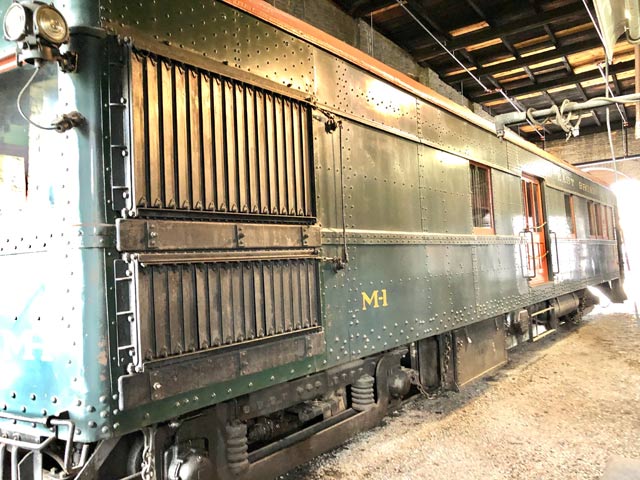

Housed in the huge ancient roundhouse is the railroad’s first locomotive. They actually used three generations of steam engines, the largest weighing 85 tons. All six are here, anxious to live again.
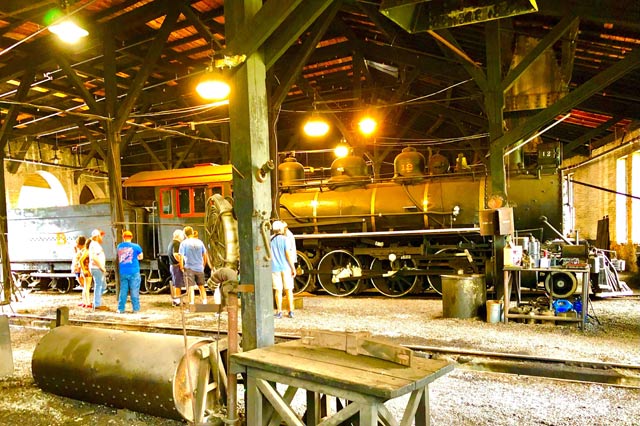
As we entered the blacksmith shop, we were astonished by the huge steam hammer and array of forges. We next visited the foundry and here we see Ken on the casting floor.
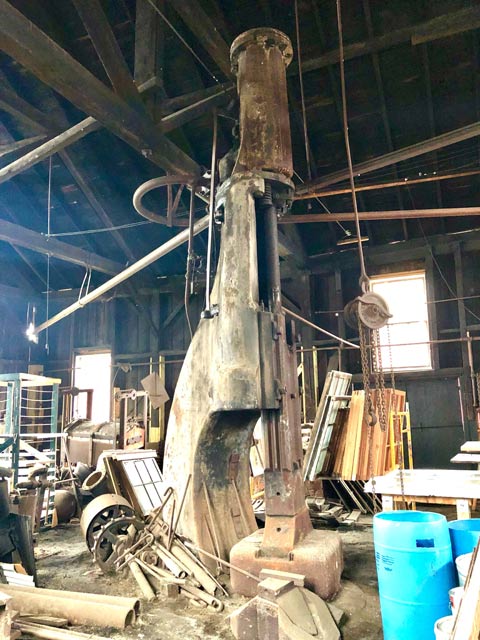
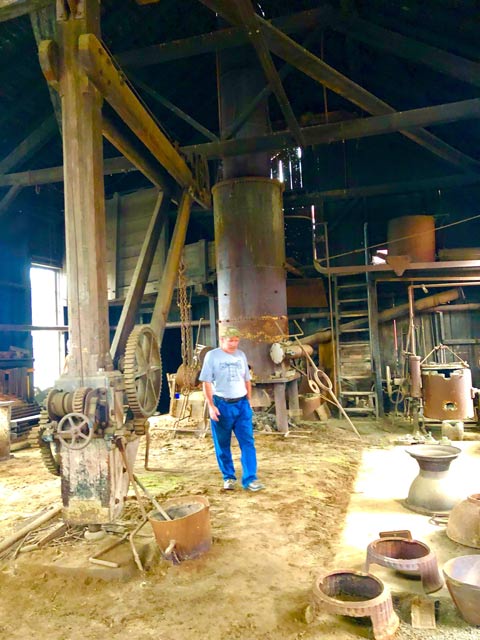
The huge wooden crane could swing 360 degrees to deliver molten iron to any molds on the floor. The iron furnace is directly behind Ken and the small brass furnace is to the right. What a step back in time!
Already astonished, the real treat was yet to come! The magnificent machine shop. It’s all there, like the workers walked out and never came back. Amazing. Powered by a steam engine, its boilers, complete with their high twin stacks, look ready to work. This little railroad had complete facilities to either repair anything or make new. It was entirely self sufficient. And so it was!
Here we see the steam engine that powered an ingenious array of belts and shafts that operated all the machines in the shop, as well as the machines in the blacksmith shop.
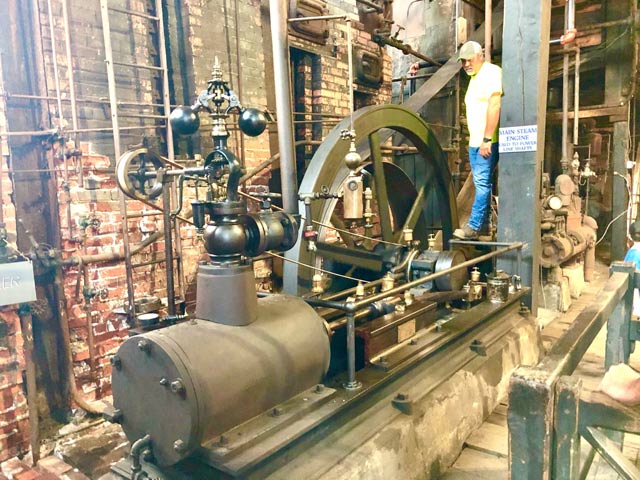
Brad is explaining the engine. Standing in the midst of this wonder, I could almost see the ghosts of the machinists busy at their jobs. A pleasant but eerie feeling. Maybe they are at lunch break? Then back to reality to continue the tour. Wow!
Here we see the massive hydraulic wheel press, operated by line shaft and belts from the steam engine. It was used to remove old railroad wheels from their axles and to install new ones.
Next viewed is Brad standing by the wheel lathe, one of five extant in the country. It could hold a complete set of locomotive wheels on their axle, and turn them true again. What marvels of the past!


Leaving the shops absolutely amazed, we were greeted by this little railcar. It was built on the chassis of a 1920s Nash automobile and used to transport eight or ten passengers when running a steam train was not practical. Cute and fully functional.
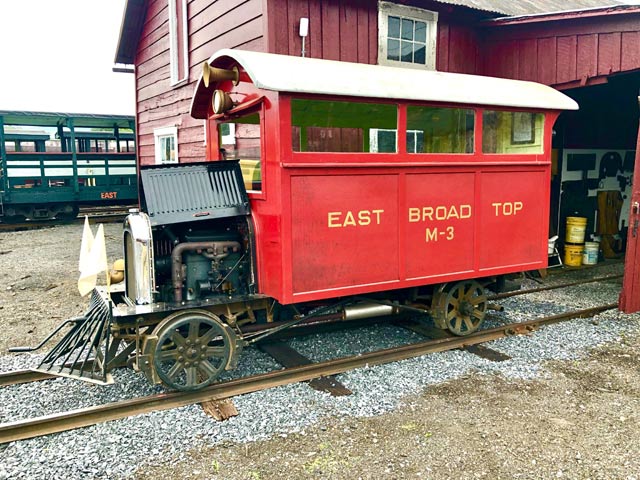
As Ken and I now motored back to our B&B, we passed the EBT station. It looked exactly as it did when built, and of course it is the ticket agency as well as a great gift shop.
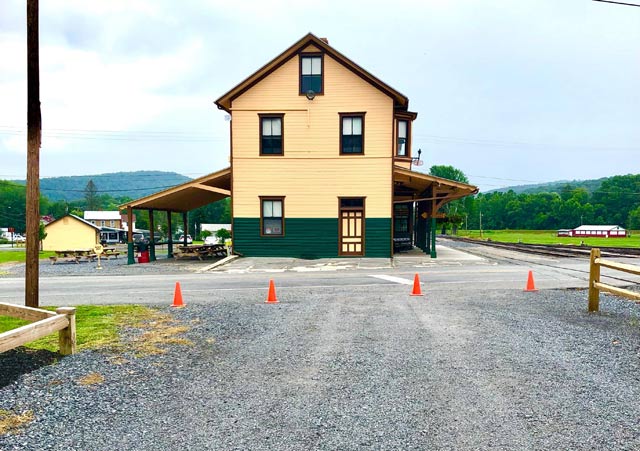
Sitting on the beautiful front porch of our B&B, we reflected about all
the sites we saw today. Truly a step back in time. As
nightfall crept in, we watched the roundhouse just across the street.
Peaceful! The “Twin Stacks” of the machine shop bid us a good
night!
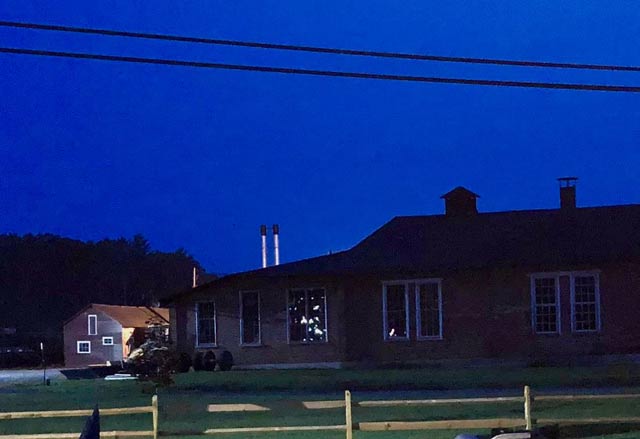
Sunday dawned a new adventure! After a hearty breakfast, we decided to tour the Rockhill Trolley Museum, adjoining the EBT railroad. So we used the golf cart to go and visit. Should prove to be fun!
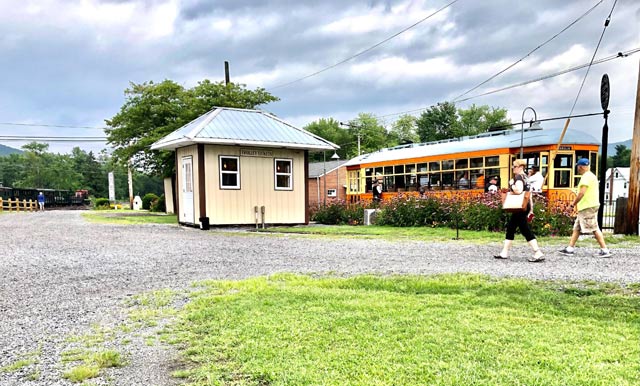
Reflecting back so many years, we find that Nick Kovalchick was friends
with a
gent who wanted to develop a trolley museum. Once a very
important part of transportation, the trolleys were rapidly disappearing
across America. His forethought
created a truly delightful
museum.
We were greeted at the Rockhill Trolley Museum’s ticket station as a car was filling for the morning’s first trip. Looked like fun. In the left background, EBT’s first train of the day was also loading.
The Trolley Museum acquired land adjoining the railroad, where their structures were erected. Convenient for all! They also got the abandoned Shade Gap spur with 2 1/2 miles of right of way. Very good but, whoops, they had acquired narrow gauge rail and needed standard gauge for the trolleys. But no big problem. The Trolley Museum and all its volunteers rebuilt the roadbed to standard gauge and installed an overhead 600 volt DC power line. Big job, and now ready to ride the rails! And so we did on our tour.
Ever wonder what the interior of a trolley looks like? The first photo shows the motorman’s location and the controls. Hmm! Not much, just a tower to operate the motors, an air brake control, and a big wheel to set the brakes if all else fails. Gosh, so I can run it? Yep, with an experienced motorman at my side. Super excited! Just pull the lever back a notch or two and it will move. Then I looked behind me and the car was full of passengers. I was introduced and got a round of applause. So up the rails we go, departing on another adventure!

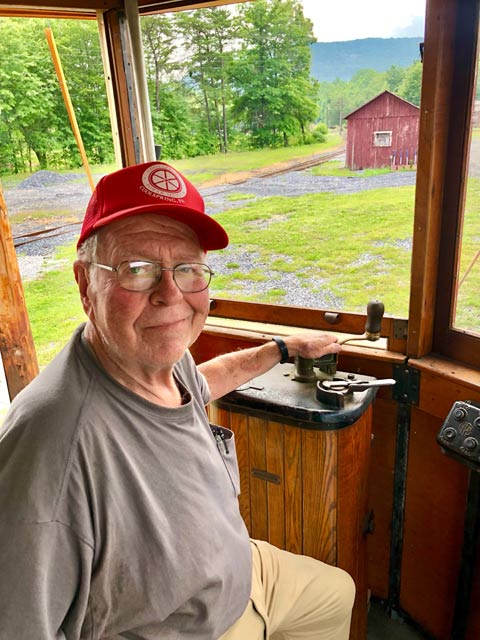
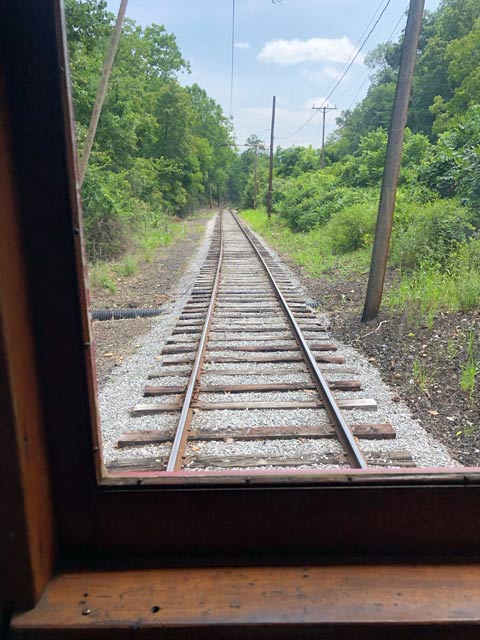
This venture is really going great and I’m learning so much. Speed up, slow down, brake a little then quickly brake off. All the different whistle signs for start, stop, grade crossing and blind curve. Great fun. But, whoops, after 2 1/2 miles, the line just ends. No place to turn around? So now what? The motorman just removes the control handles and we walk to the back of the car, which is now the new front, replace the handles, and head back down the line. Clever!
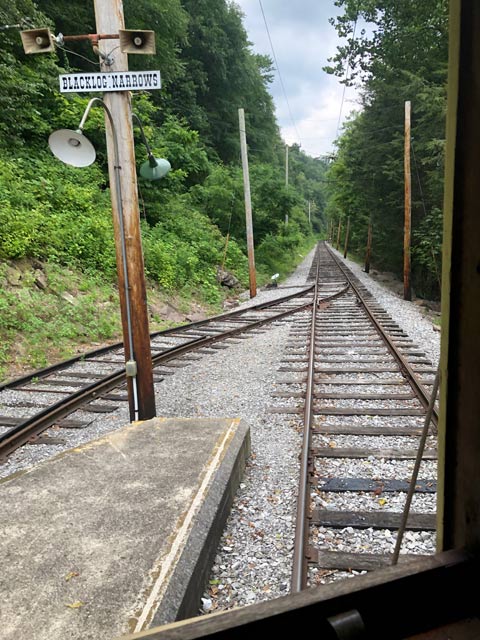
Back from an exciting trip, Ken and I discover a small Brookville
locomotive that we learn is their workhorse to move items about.
The staff became excited to learn
that Ken is a Brookville employee and had a barrage of questions for him. Smiling, he
answered all.
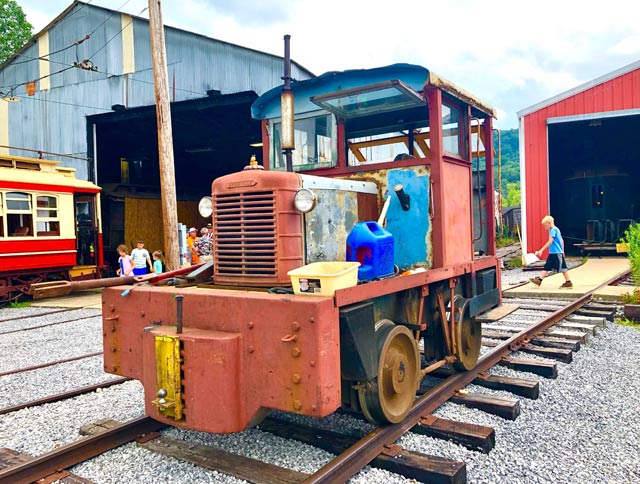
We happily wandered all about the grounds, including the huge car barn, finally ending in the gift shop.

Wow! What a wonderful weekend. But as the day drew on, we realized that it was time to load the golf cart and head back to Coolspring. So we bid all our newly made friends goodbye and had a pleasant drive home, leaving Orbisonia and its two fantastic attractions behind. Yes, a dream come true.